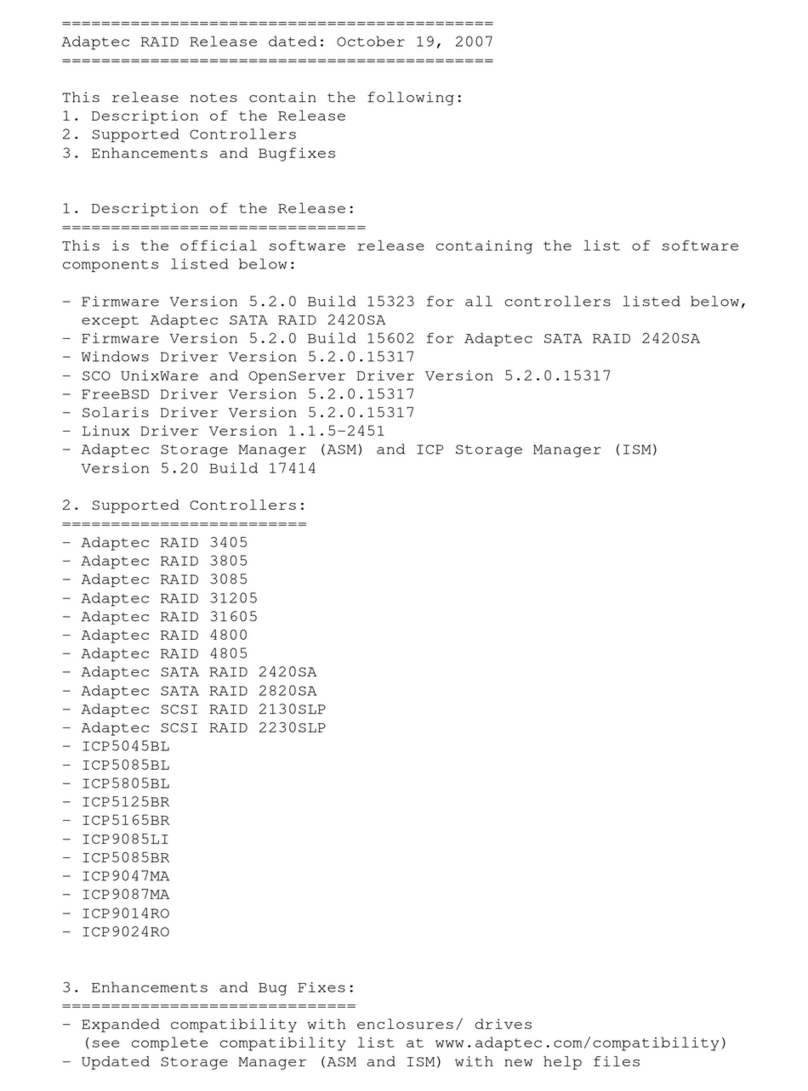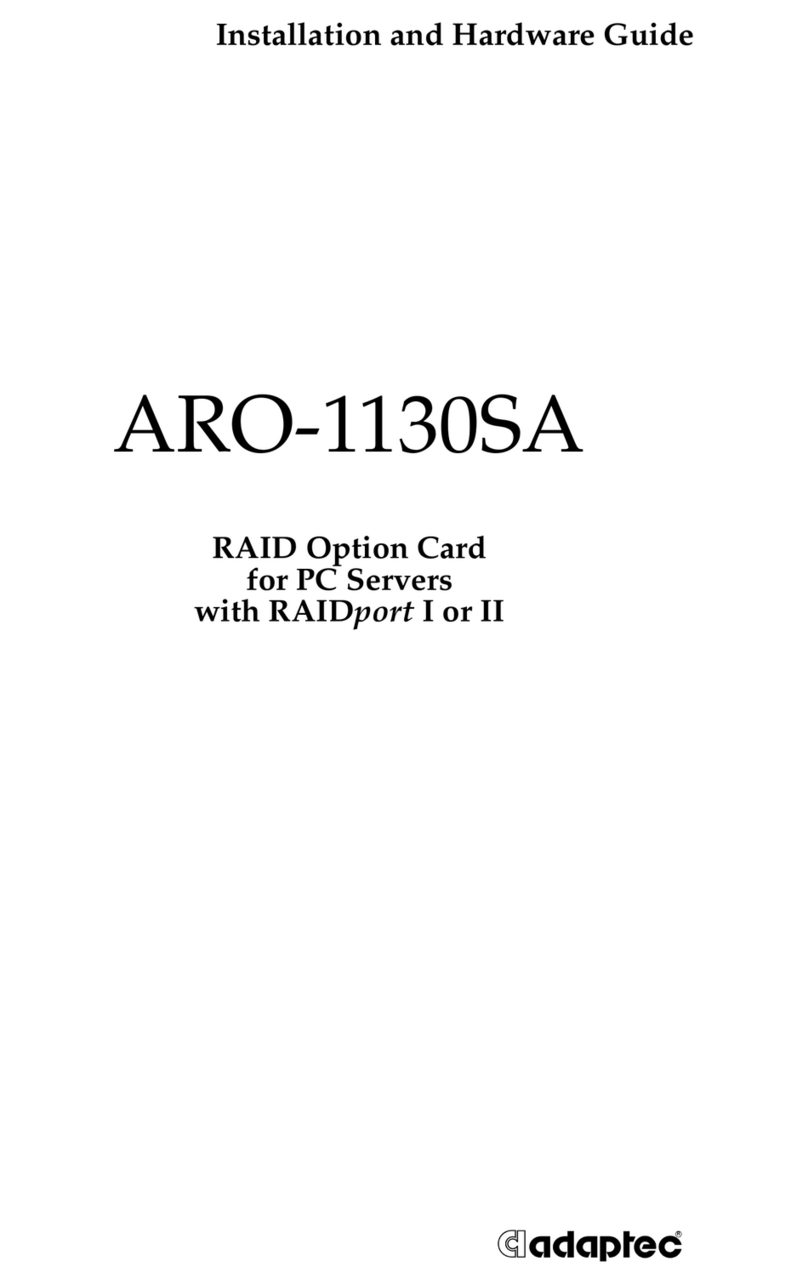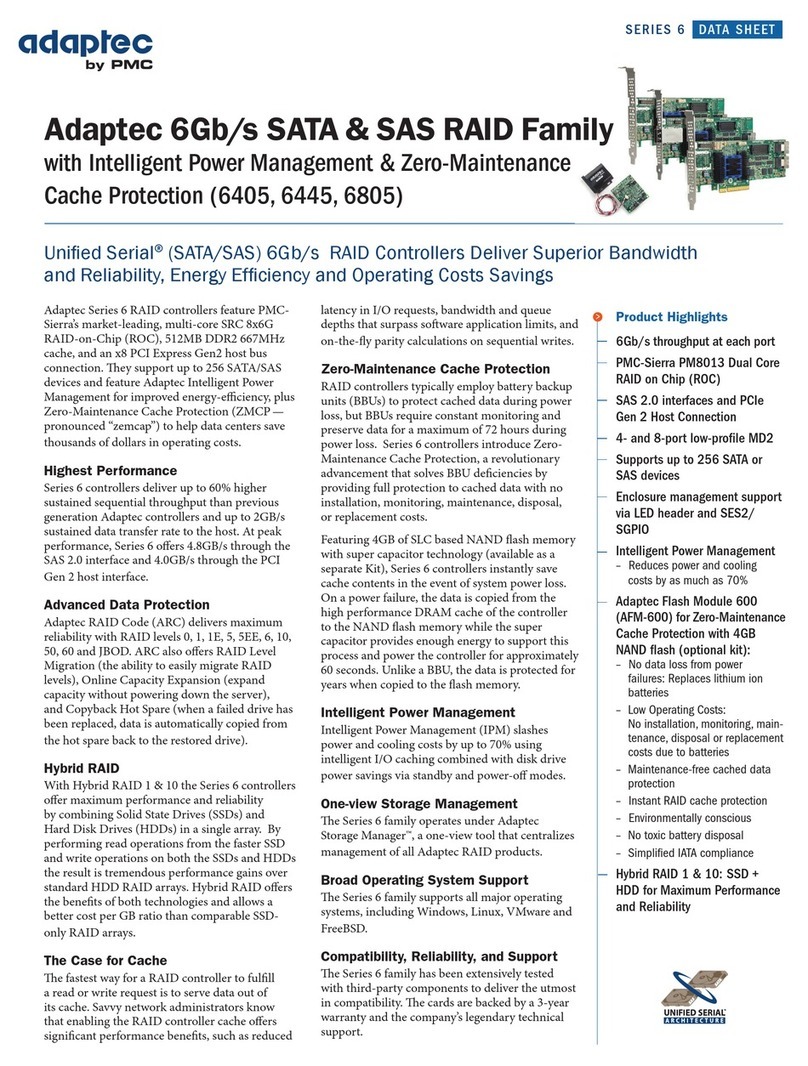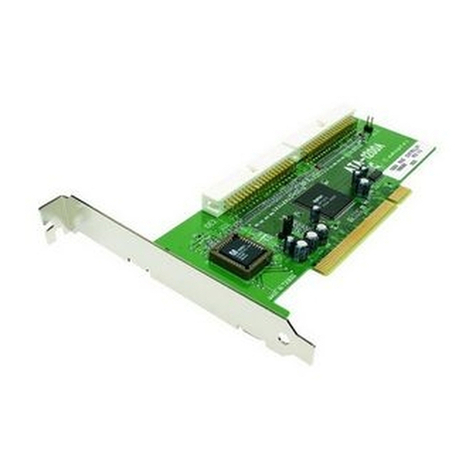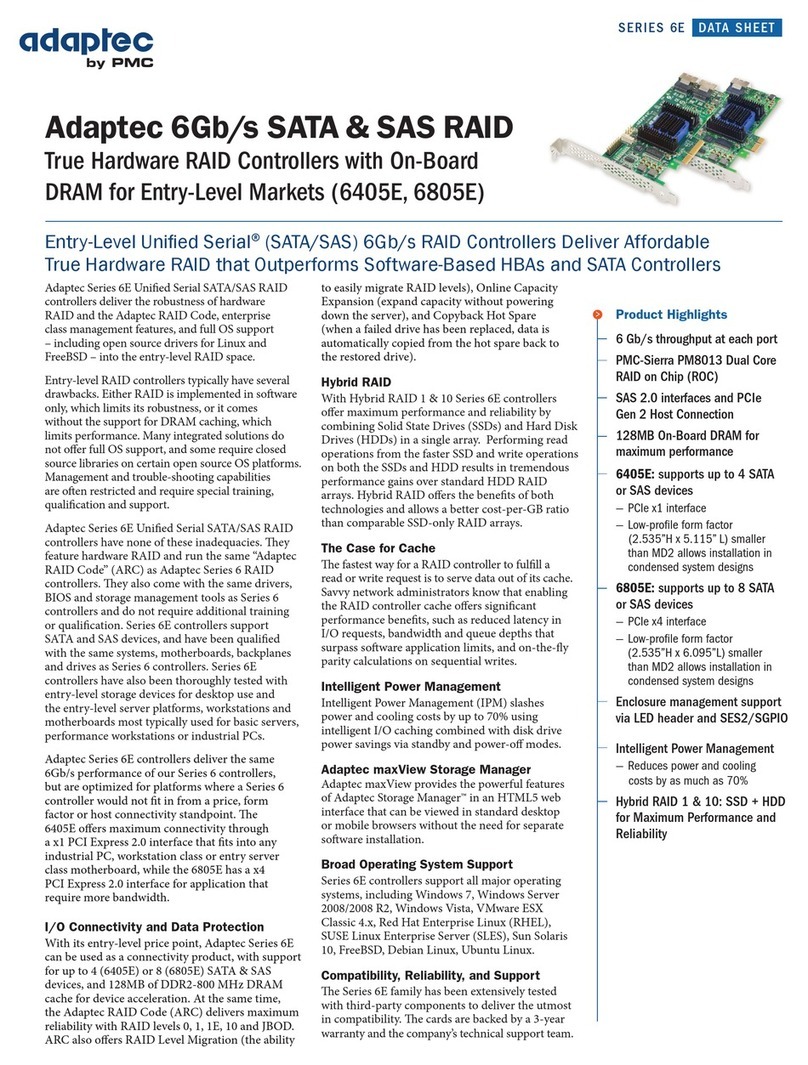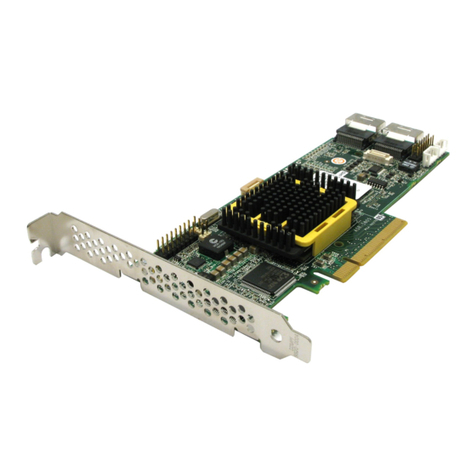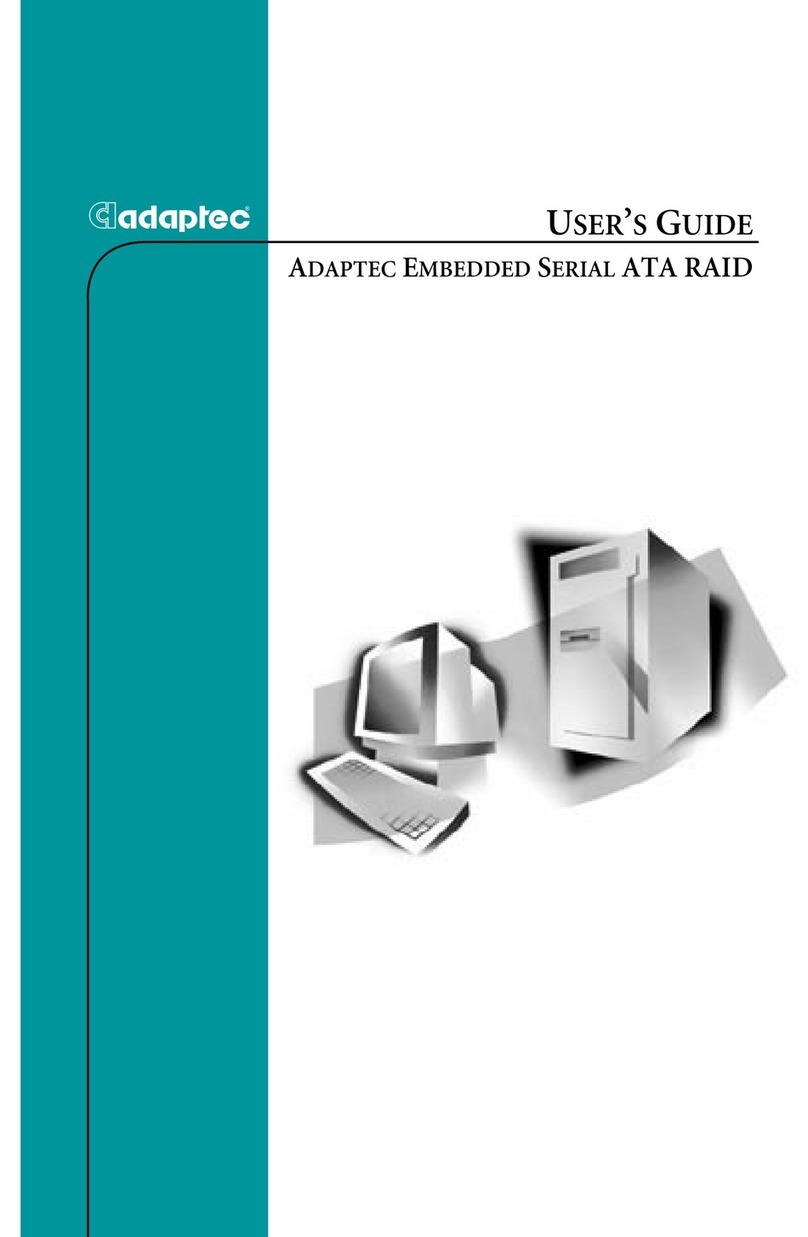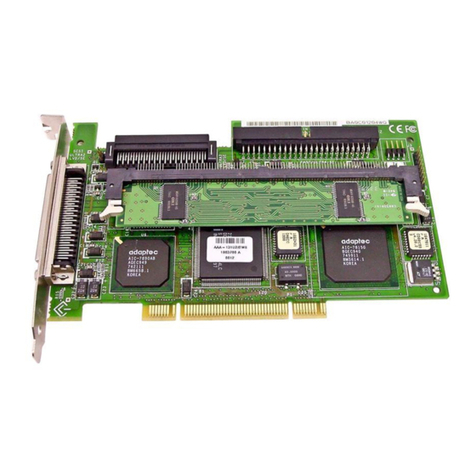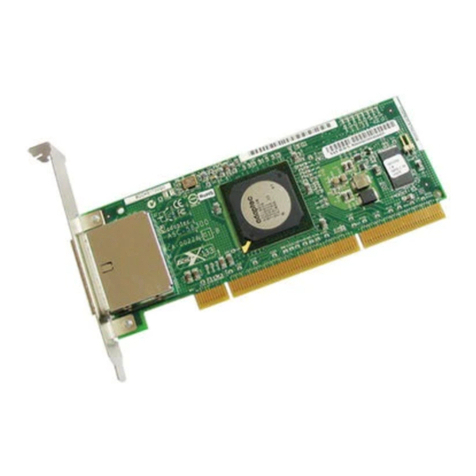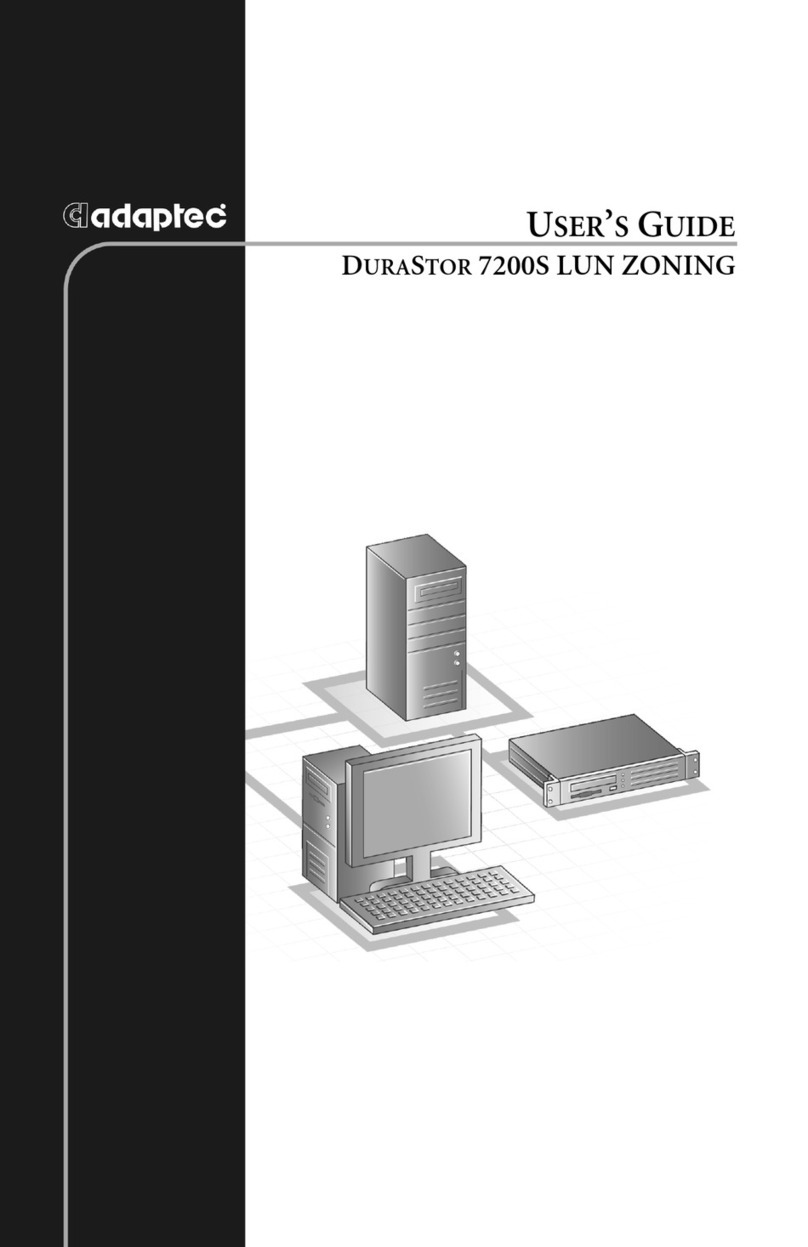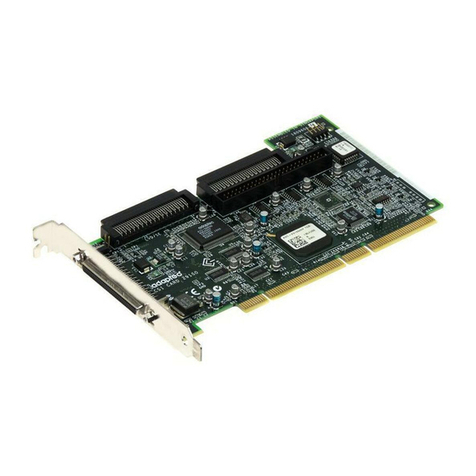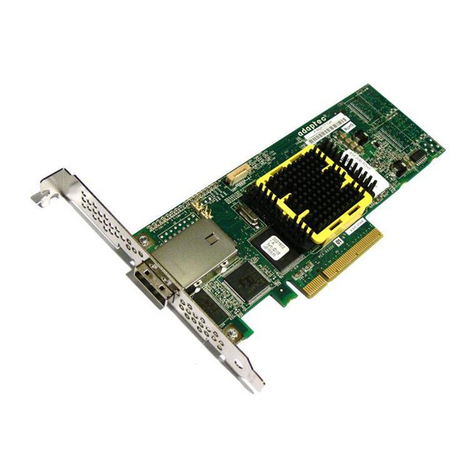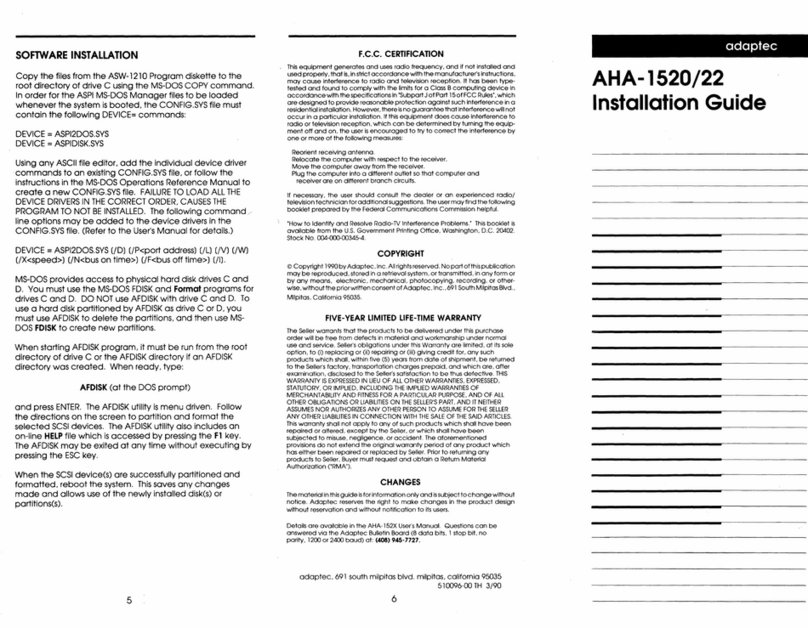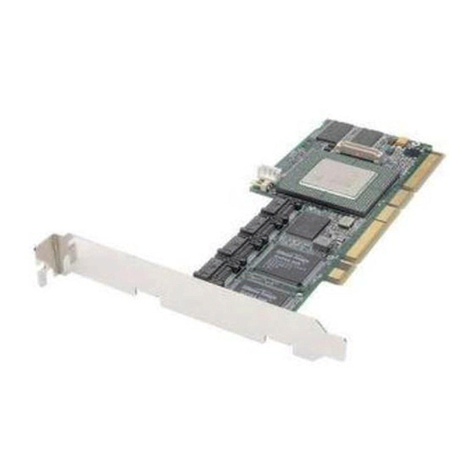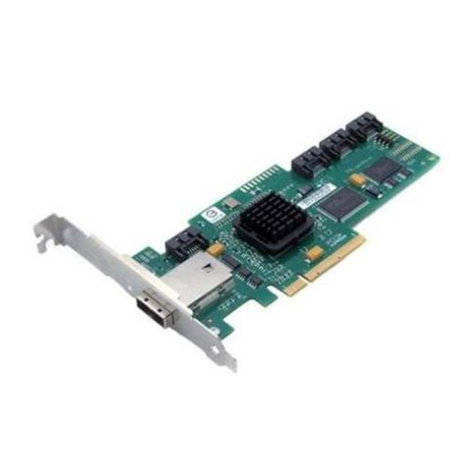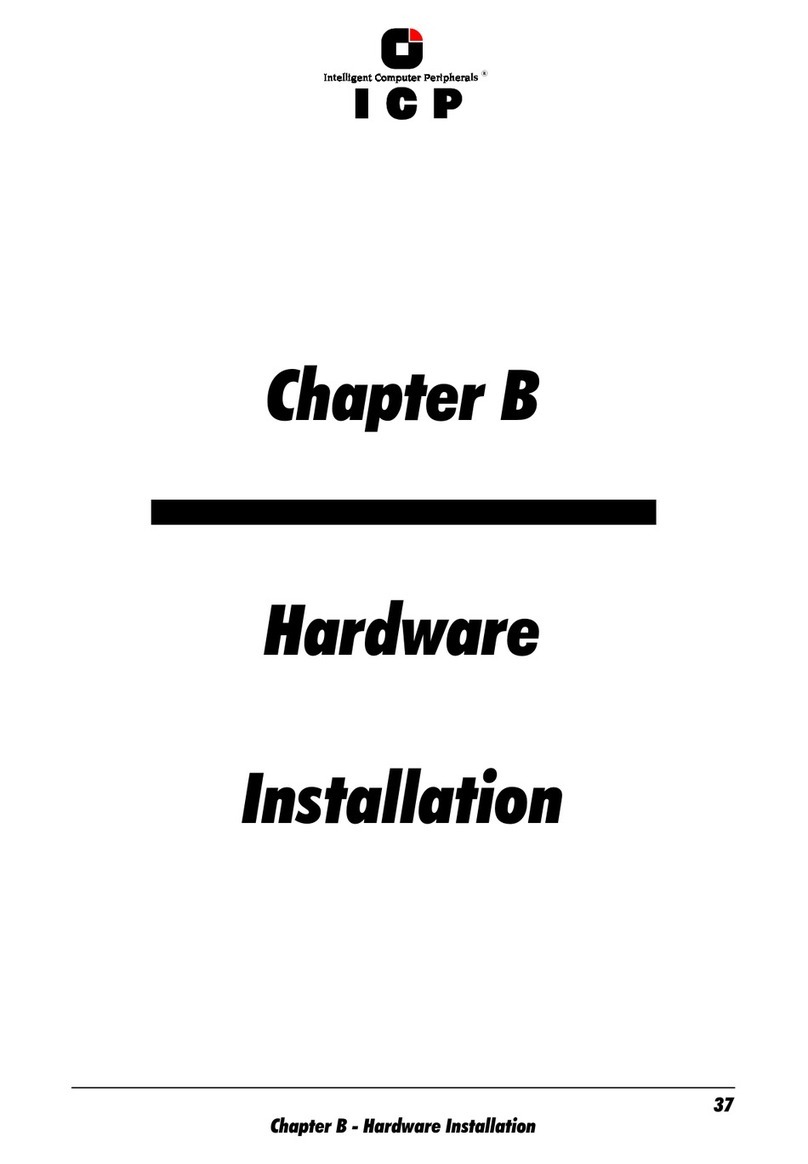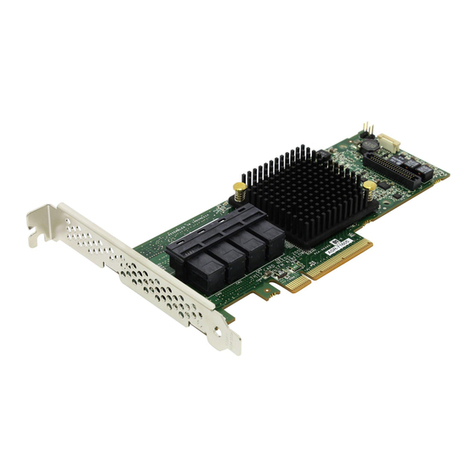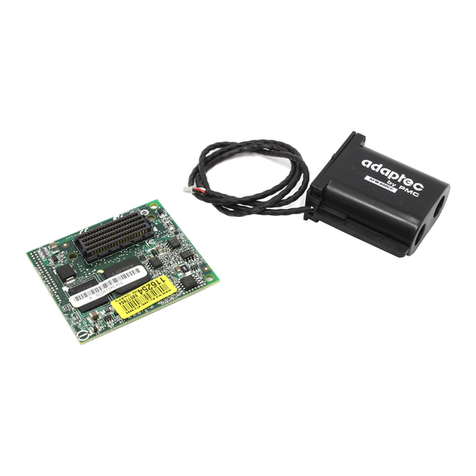
>
ZERO-MAINTENANCE CACHE PROTECTION BRIEF
Reduced Data Center Operating Costs and Maximum
Protection for Cached Data
Highlights
Low Operating Costs
– No installation, monitoring,
maintenance, disposal or
replacement costs due to
batteries
No Data Loss from Power
Failures
– Replaces lithium ion batteries
Maintenance-free Cached Data
Protection
– No need to monitor battery
charge level
– No shutdown required for
battery replacement
– Protects data indefinitely — no
need to rush to restart systems
“before the battery runs out”
– Stores protected data for years
Instant RAID Cache Protection
– Charges in minutes instead of
hours
– RAID performance optimized
immediately
Environmentally Conscious
– No toxic battery disposal
– Works in conjunction with
Adaptec Intelligent Power
Management for industry’s
‘greenest’ solution
- Simplified IATA compliance
Available fully integrated on
Series 5Z and Series 6Q RAID
controllers and as an add-on
kit for Series 6 RAID controllers
IDC estimates that the cost of operating a
piece of IT equipment over a four year period
may be four times greater than the original
cost of acquiring it.
Adaptec Series 6, Series 6Q with maxCache
2.0 and Series 5Z RAID controllers with
Zero-Maintenance Cache Protection (ZMCP
— pronounced “zemcap”) provide maximum
protection for cached data and eliminate the
substantial costs and environmental impact
of complex, messy and expensive Lithium Ion
batteries, while improving cache protection
and cache performance.
Why do you need Cache Protection?
e adoption of RAID 5 and 6 continues to
grow in enterprise storage systems as users
continue to be concerned about optimizing
capacity utilization for rapidly growing data
sets. However, optimal performance can suer
unless the system is operated with all available
caches enabled.
With controller cache enabled, however, data
is stored in the controller’s memory and can be
lost when a system power outage occurs. e
most common protection against this scenario
is to backup the controller cache with a battery
backup unit (BBU) installed directly on the
controller. is battery is used to maintain
the data of the on-board memory cache until
power can be resupplied to the unit.
A second use for the BBU is in connection
with Adaptec’s Intelligent Power Management
which is oered on Adaptec Series 6, Series
6Q, Series 5Z, Series 5 and Series 2 RAID
controller families. In order for the controller
to slow down or stop disk drives there must
be no I/O activity to the disk. However, many
operating systems do very low, but non-zero,
levels of I/O all the time — even when all
applications are idle. e on-board memory
cache on the Adaptec controllers can play an
important role in supporting Intelligent
Power Management by absorbing these
I/O requests and saving them in memory,
instead of spinning up disk drives that would
otherwise be idle. Of course, this approach is
only fail-safe if the contents of the on-board
memory are preserved across a power outage.
Zero-Maintenance Cache Protection
Despite their obvious value, BBUs (available
for Series 5) are not the optimal solution:
they must usually be purchased separately
from the controller card, and require constant
monitoring, maintenance and replacement.
Old batteries must be disposed of in an
environmentally-responsible manner.
Adaptec Series 6, Series 6Q with maxCache
2.0 and Series 5Z controllers oer a dierent
approach: Zero-Maintenance Cache
Protection.
e basic idea of ZMCP is to detect the loss
of power to the controller and then to copy
the data in the on-board controller cache to
non-volatile location — in this case NAND
ash memory of a type similar to that used
in USB thumb drives and solid state disks.
is process is supported by a super capacitor
that keeps the necessary parts of the controller
active for the time required to perform the
NAND ash copy.
Once the data has been copied to the ash
memory the controller no longer needs power
in order to preserve the data.
When power is nally returned to the
controller, the data in the ash memory
are copied back to the on-board controller
cache and operation resumes as normal
with all outstanding I/O requests preserved.
>
Zero-Maintenance Cache Protection
for Series 6, Series 6Q
and Series 5Z RAID Controllers
